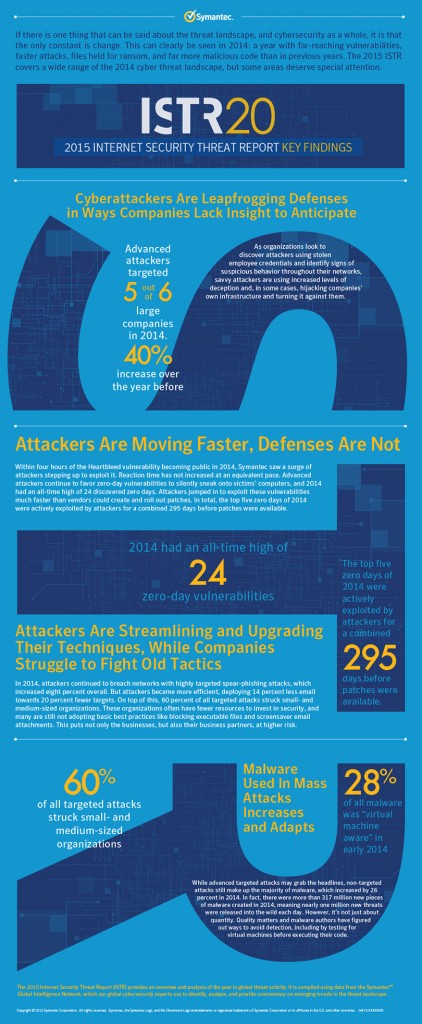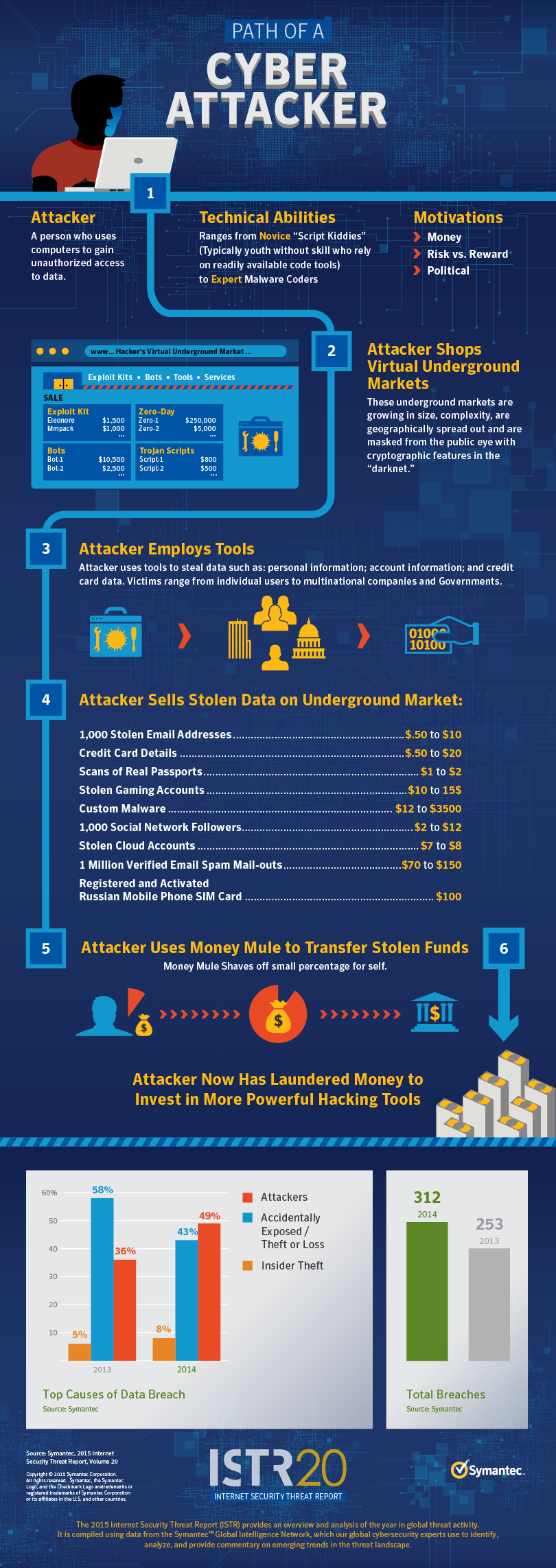Five out of six companies with more than 2,500 employees were targeted in cyberattacks in 2014, representing a 40% increase last year, according to Symantec’s annual Internet Security Threat Report. But by no means does that imply big businesses are the primary target: 60% of all targeted attacks struck small- and medium-sized organizations.
The spear-fishing and fraudulent email scams deployed in these hacks have also become more effective. Overall, 14% less email was used to infiltrate an organization’s network, yet 2014 saw a 13% increase in attackers as the cause of a data breach, and the total number of breaches rose from 253 in 2013 to 312 in 2014. This notable increase in precision is a clear indication that companies are not updating their defenses to match current threats.
Fortifying against cyberbreach continues to demand even more concerted effort as malicious actors grow more sophisticated, introducing more and better malware to their campaigns. “While advanced targeted attacks may grab the headlines, non-targeted attacks still make up a majority of malware, which increased by 26% in 2014,” Symantec reported. More than 317 million new pieces of malware were created last year, meaning almost a million new threats were released daily.
Changes in the top causes of data breach offer both good and bad news. While 13% more cyberbreaches were caused by attackers and breaches due to insider theft increased 3%, Symantec found that 15% fewer were due to accidental exposure, theft or loss.
Check out the infographics below for more of Symantec’s findings and insights on how hackers operate:


